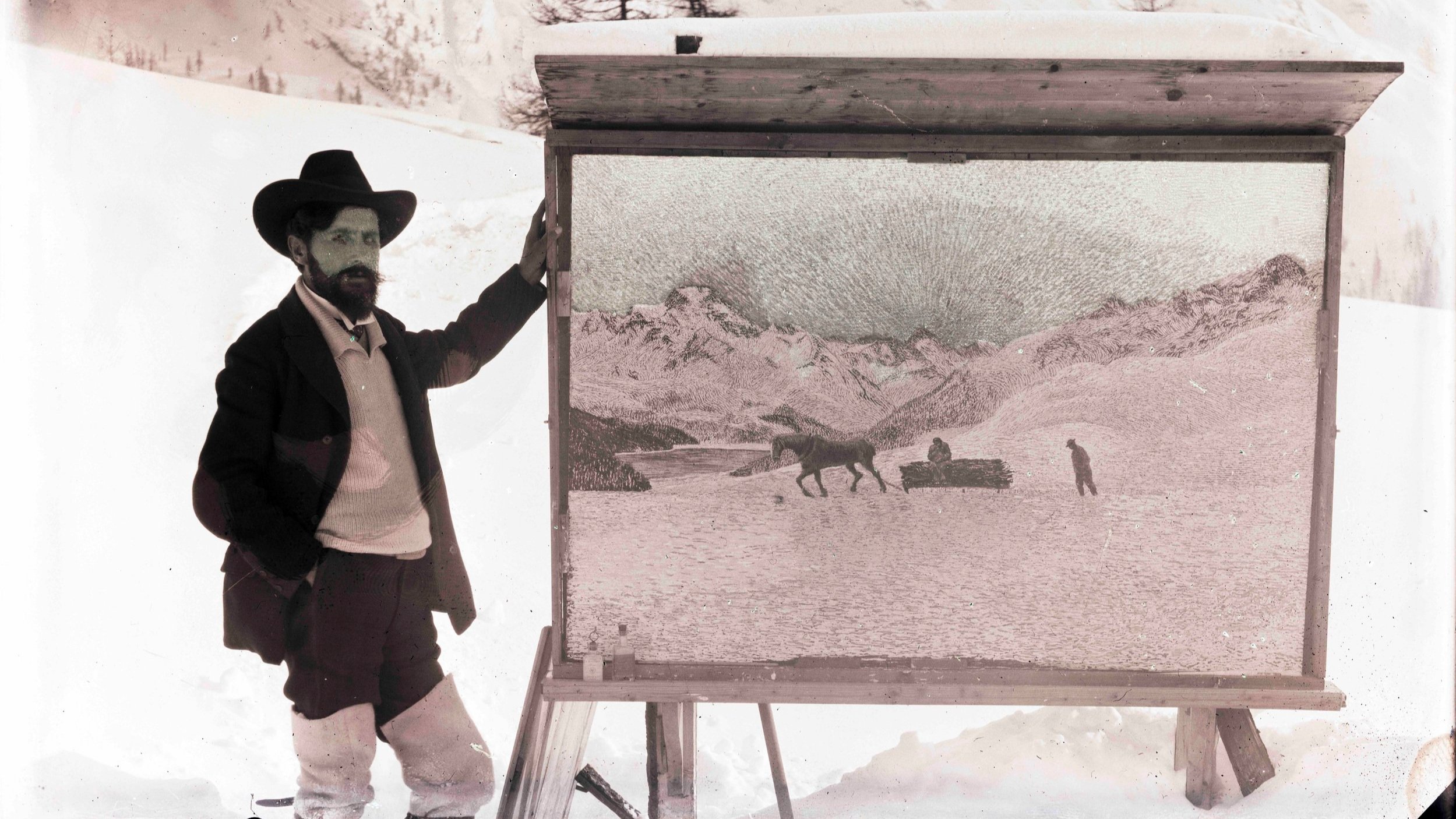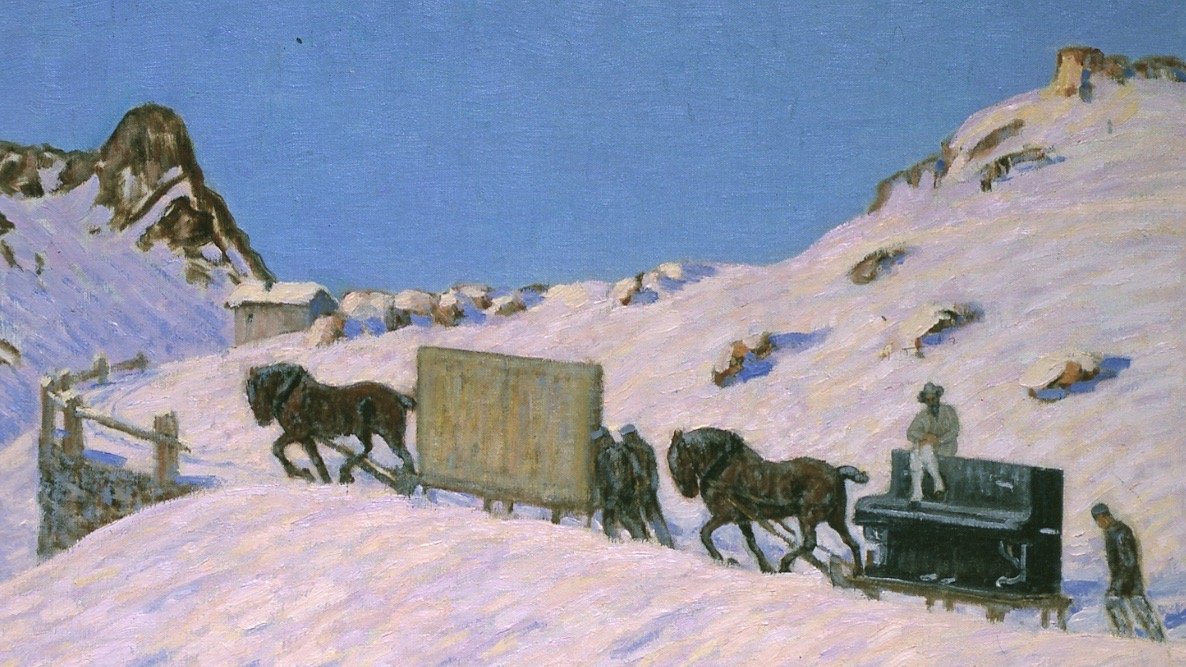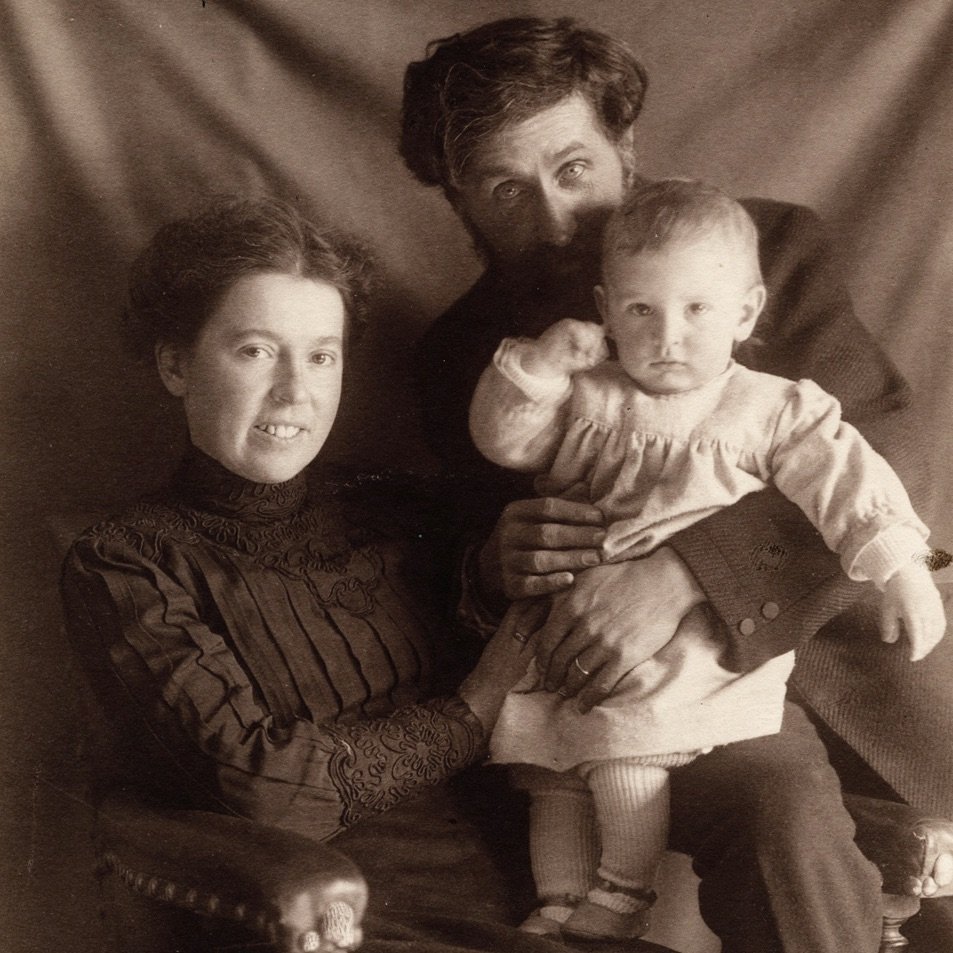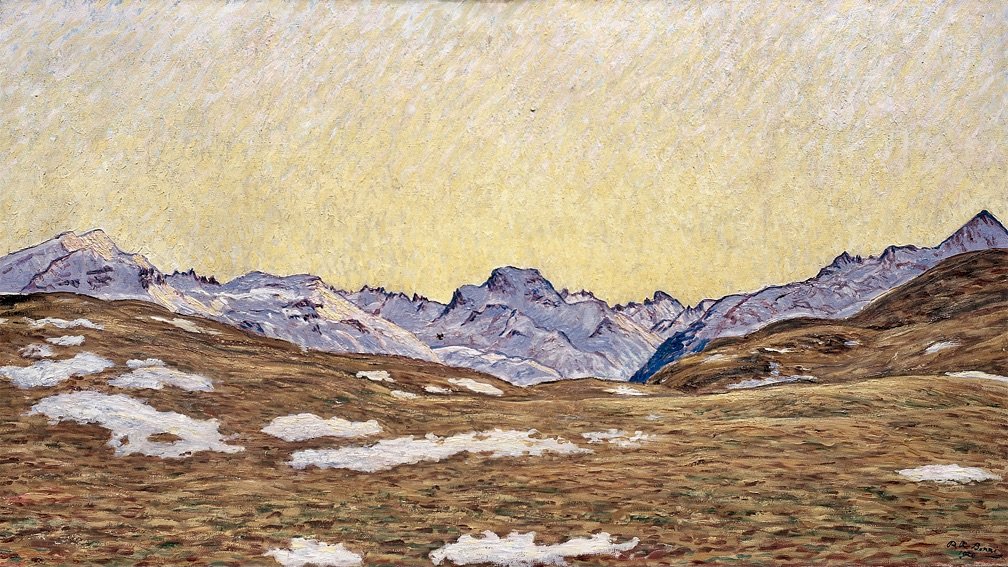Peter Robert Berry II
(1864 – 1942)
Peter Robert Berry hat in Tagebüchern und zahlreichen Briefen die Stationen seines Lebens festgehalten. Dieses ist bezeichnend für eine Zeit des Umbruchs: Die Wandlung vom «fashionablen» Kurarzt hin zum zurückgezogen lebenden Maler verdeutlicht den Konflikt zwischen der Welt der Gäste und Sommerfrischler und dem Wunsch, sich mit dem Engadin nicht allein als touristisch besetzter Landschaft auseinanderzusetzen.
Reich an Interessen und Neigungen, der Musik verbunden, dem Schreiben verpflichtet, galt seine besondere Neigung der Malerei. Als zentrales Vorbild ist Giovanni Segantini zu nennen, den er persönlich kannte und bewunderte. Beim Bergeller Künstler Giovanni Giacometti suchte er früh Rat und fand entscheidene Unterstützung in seinem Wunsch zu malen.

Das Interesse von Peter Robert Berry galt der Engadiner Landschaft, mit ihr sind seine kraftvollsten Bilder verknüpft. Er suchte die unberührte Natur mit ihren eigenen Motiven und Lichtstimmungen, wie hier auf dem Berninapass. Die Fotografie zeigt Berry vor seinem Bild «Das grosse, stille Leuchten» (1910).
Der Blick des Betrachters wird vom Pass hin zum Piz dal Teo in der Valposchiavo gelenkt, der Horizont ist flach und weit. Es ist ein Himmel, der nicht fokussiert, vielmehr ein ganzes Panorama verspricht. Die Pinselstriche fügen sich zu einem horizontalen Fluss, und beinahe ist man versucht, sich um die eigene Achse zu drehen und in die warme Nachmittagssonne zu blinzeln.
Berry malte seine Bergbilder wie schon Segantini in freier Natur. Eine grosse Holzkiste barg die Leinwand; ein Bretterverschlag schützte notdürftig gegen den Wind; Stiefel, Gamaschen, Mantel und Hut mussten bei Schnee und Kälte genügen.
Biografie
Peter Robert Berry II wird am 11. September 1864 als ältester Sohn des Kurarztes Peter Robert Berry I und seiner Frau Cecilia Berry-Stoppani in St. Moritz geboren. Nach dem Besuch der Kantonsschule in Chur studiert er an den Universitäten Zürich, Heidelberg und Leipzig Medizin. Nach der Dissertation 1892 arbeitet er für kurze Zeit an einem Londoner Krankenhaus.
1893 nimmt er die Stelle des leitenden Arzts der «Heilquellen-Gesellschaft» St. Moritz-Bad an. Nach der Verlobung mit der reichen Amerikanerin Kitty Spalding gibt er 1895 diese Stellung jedoch auf und verbringt seine Zeit in Paris und Berlin mit zusätzlichen Studien insbesondere der Chirurgie. Trotzdem entsteht in dieser Zeit sein Wunsch, Maler zu werden und als Künstler zu reüssieren. Nicht zuletzt deshalb wird die Verlobung 1896/97 aufgelöst und P. R. Berry kehrt ins Engadin zurück.
Er lernt den Maler Giovanni Segantini kennen, dessen Projekt eines Engadiner Panoramas für die Pariser Weltausstellung von 1900 er eifrig unterstützt. Der Wunsch zu malen, ist in dieser Zeit der Selbstfindung und der Zweifel besonders ausgeprägt. Seine Versuche mit Farbstiften und Pastellfarben können ihn nicht befriedigen. 1898 wendet er sich deshalb an seinen Freund Giovanni Giacometti mit der Bitte, ihn in die Kunst des Ölmalens einzuführen. Doch am 28. September 1899 stirbt Giovanni Segantini an einer Unterleibsentzündung auf dem Schafberg bei Pontresina.
Unten ein kleines Dokument aus dem Leben von Peter Robert Berry II. 1935 erhielt der Maler Besuch von Viktor R. Pfrunder, der die Szenen auf Film aufzeichnete.

Berry nimmt rege an den Diskussionen um die Entwicklung seines Heimatorts teil. 1898 verfasst er die Streitschrift «Über die Zukunft des Kurortes St. Moritz», in der er sich gegen die Werbung für Tuberkulose-Kranke im Engadin ausspricht: Bald sei mit einer kausalen (Immun-)Therapie zu rechnen, dann verkämen diese Sanatorien zu «hochalpinen Austernbänken à la Schatzalp». St. Moritz sollte vielmehr ein «Weltbadeort für Sommer und Winter, mit allen Einrichtungen für Kurgebrauch, Sport und Unterhaltung» werden. Berry wird im Tal allseits geschätzt und wirkt als Mitglied der Bau- und der Badkommission für die Gemeinde.
Berry steht der touristischen Entwicklung mit einer ironischen Distanz gegenüber. Nach dem Tod von Segantini schrieb er 1899: «Unser Leben wäre hier oben, fern aller Anregung der Gesellschaft, Wissenschaft & Kunst ein Vegetieren, fänden wir nicht in der Natur einen vollwerthigen Ersatz für alles, was uns an Mitteln der Erholung & Erbauung sonst abgeht. Ich war von jeher ein großer Naturfreund. So vieles in der Natur hat mich erst Segantini zu sehen gelehrt & dafür bin ich ihm zu Dank verpflichtet.»
1900 beginnt Berry sein Studium der Malerei an der Pariser Académie Julian, wahrscheinlich auf Anraten der Freunde Giovanni Giacometti und Andrea Robbi, die diese Schule Jahre zuvor besucht hatten. 1901/1902 studiert er an der privaten Malschule Heinrich Knirr in München, hier steht genaues Zeichnen im Vordergrund. Gleichzeitig frequentiert er Kurse an der «Königlichen Thier-Arzney-Schule» (später die veterinärmedizinische Fakultät der Ludwig Maximilian Universität), was die souveräne Darstellung der Pferdeanatomie – vor allem in voller Bewegung – in seinen Werken erklärt.
1903, 1904 und 1906 folgen weitere Aufenthalte in Paris und erneutes Studium an der Académie Julian und der Académie von Montparnasse. 1908 lässt sich P. R. Berry wieder im Engadin nieder und heiratet die St. Moritzerin Maria Rocco, eine Enkelin von Johannes Badrutt.
P.R. Berry verbringt zwischen 1905 und 1914 zahlreiche Winter in den Hospizen auf dem Julier- und Berninapass. Hier malt er bei klirrender Kälte in freier Natur, spielt abends in der Unterkunft auf seinem mitgebrachten Klavier (wie auf dem Gemälde «Bergfahrt mit Klavier», 1905, zu sehen) oder vertieft sich in seine Nietzsche-Lektüre. 1907 schliesst er Bekanntschaft mit Ferdinand Hodler, der zu dieser Zeit während einigen Wochen im Engadin weilt. Auch gehörte P.R. Berry zu den Mitbegründern des «Comitato per il Museo Segantini», das 1907 dem Architekten Nikolaus Hartmann jun. den Auftrag für den Bau des Segantini Museums erteilte.
1918 beim Ausbruch der Spanischen Grippe ist Berry nochmals intensiv als Arzt tätig, sonst widmet er sich ausschliesslich der Malerei. Die Familie lebt in bescheidenen Verhältnissen und erhält sich nicht zuletzt durch den Fremdsprachen-Unterricht Maria Berry-Roccos. Im Jahr 1912 wird sein einziger Sohn, Peter Robert Berry III, genannt Pierin, geboren.
Peter Robert Berry ist kein Vermarkter seiner Werke. Er kann und will keinen der zeitgenössischen Galeristen auf seine Seite ziehen; seine Werke bezeichnet er gelegentlich als seine «Kinder». Sein Gesamtwerk auszustellen, ist ein Wunsch, der sich in Briefen und Schriften niederschlägt, mag aber nicht gelingen. Zudem führen sowohl der 1. Weltkrieg von 1914–1918 sowie die Weltwirtschaftskrise von 1929 zu einer ausserordentlich schwierigen Lage auch im Engadin.
Peter Robert Berry II stirbt am 14. November 1942 in St. Moritz. Er hinterlässt seine Frau und seinen Sohn, Peter Robert Berry III (1912–1983), der ebenfalls als Arzt in St. Moritz wirken wird. Erst nach seinem Tod werden 1945 im Rahmen einer Gedächtnisausstellung im Bündner Kunstmuseum Chur die Werke von Peter Rober Berry II im Überblick gezeigt.








